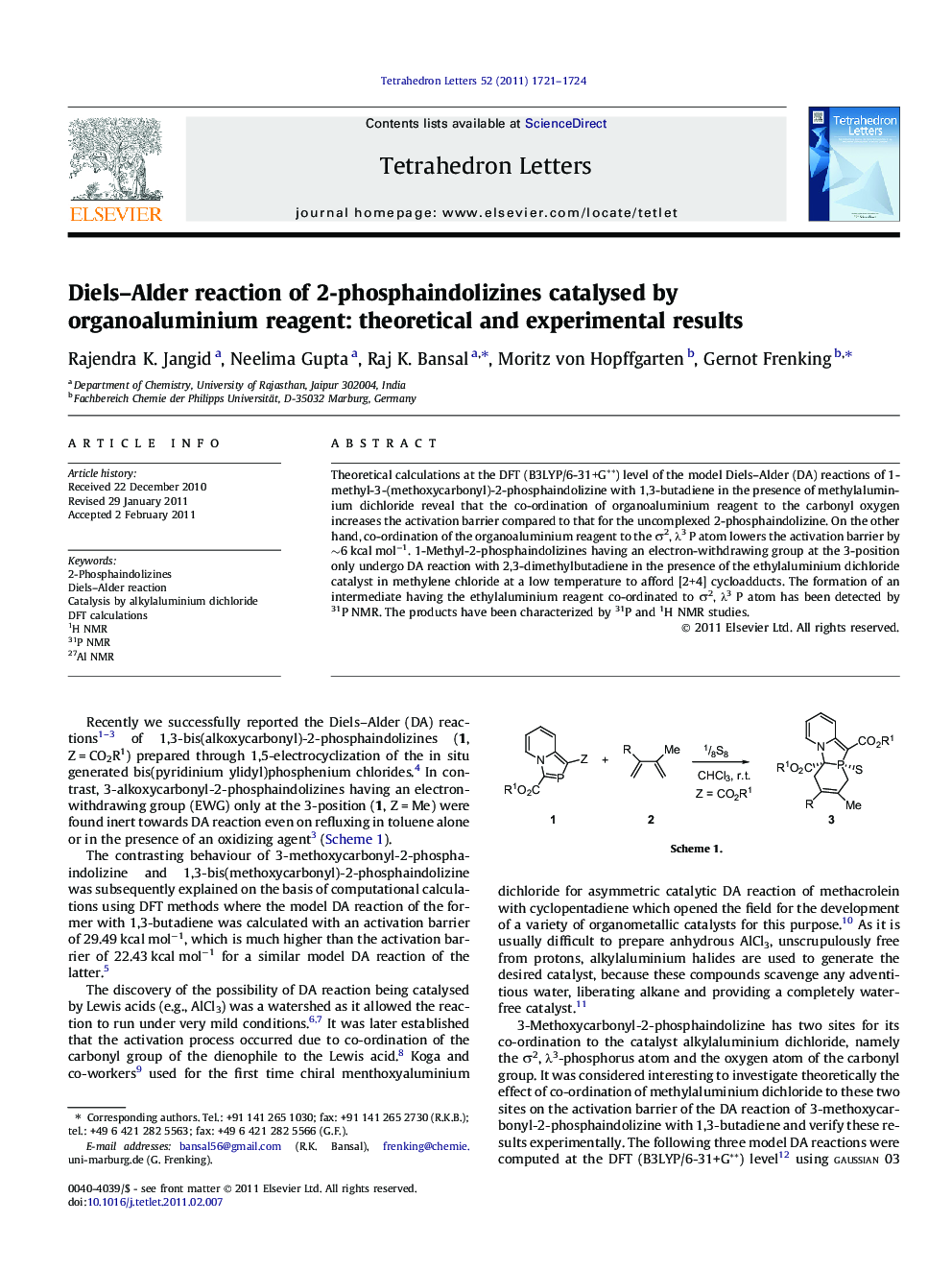| Article ID | Journal | Published Year | Pages | File Type |
|---|---|---|---|---|
| 5267777 | Tetrahedron Letters | 2011 | 4 Pages |
Theoretical calculations at the DFT (B3LYP/6-31+G**) level of the model Diels-Alder (DA) reactions of 1-methyl-3-(methoxycarbonyl)-2-phosphaindolizine with 1,3-butadiene in the presence of methylaluminium dichloride reveal that the co-ordination of organoaluminium reagent to the carbonyl oxygen increases the activation barrier compared to that for the uncomplexed 2-phosphaindolizine. On the other hand, co-ordination of the organoaluminium reagent to the Ï2, λ3 P atom lowers the activation barrier by â¼6 kcal molâ1. 1-Methyl-2-phosphaindolizines having an electron-withdrawing group at the 3-position only undergo DA reaction with 2,3-dimethylbutadiene in the presence of the ethylaluminium dichloride catalyst in methylene chloride at a low temperature to afford [2+4] cycloadducts. The formation of an intermediate having the ethylaluminium reagent co-ordinated to Ï2, λ3 P atom has been detected by 31P NMR. The products have been characterized by 31P and 1H NMR studies.
Graphical abstractDownload full-size image
